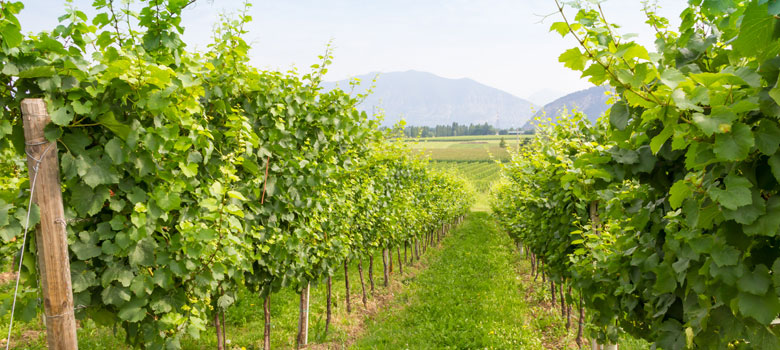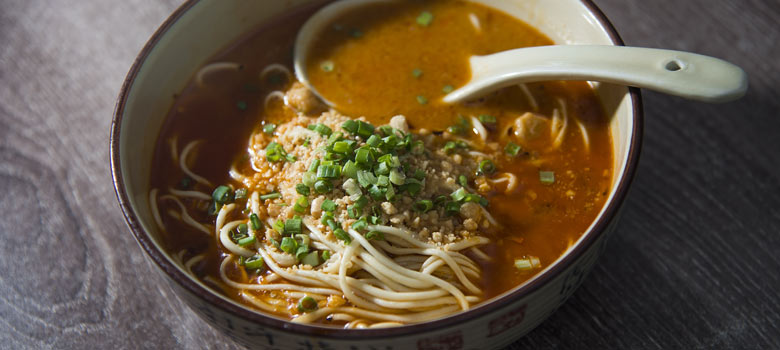
Wine
What is Gewürztraminer?
Spice up your white wine choices by getting to know the alluring, spring-perfect Gewürztraminer.
Without wanting to insult either the grape variety or wine novices, Gewürztraminer is known as a ‘beginner wine’. That is, it is one of the easiest varieties to recognise. Sauvignon Blanc is another ‘beginner wine’, but it has a much stronger fan club than the fairly obscure Gewürztraminer. Yet being easy to recognise is not a crime and this intriguing white is well worth getting to know.
Shop Gewürztraminer Wine
Discover the delights of this delicious and decadent white today – it may become your new favourite!
Gewürztraminer is an aromatic white grape originally from Germany.
Similar in weight to Viognier and Verdelho, Gewürztraminer is known for its lychee, pineapple, grapefruit and guava flavours.
Gewürztraminer pairs well spicy dishes like asian.
Gewürztraminer can be cellared for up to 8 years.
Gewürztraminer is medium bodied with a medium sweetness.
While Gewürztraminer is a German grape, its spirit home is in France.
Origins of Gewürztraminer

Gewürztraminer is an aromatic white grape that is recognisable by its heady, aromatic scent. Gewürztraminer has a thick skin, which imparts high levels of phenolic compounds that give the wine a distinctive full-bodied, oily textured palate. Some winemakers deliberately offset the slightly bitter phenolic characters with some residual sugar, which when combined with the variety’s high natural alcohol, results in a full-bodied, rich wine. Its skin of the grape is pink (like Pinot G), so pigments remaining in the wine give it a deep golden, sometimes copper colour.
Gewürztraminer is widely grown throughout Germany and France’s Alsace region and although it’s a German grape, its spiritual home is Alsace and its name means ‘spiced Traminer’. In English, it is often referred to colloquially as simply Gewürz.
Alsace in north eastern France (skirting the German border) is Gewürz’s spiritual home. Here it has a natural affinity with the heavy clay-based soils and it is one of the four noble varieties permitted to be produced as Alsace Grand Cru. Pinot Gris, Riesling and Muscat are the others.
You can find it blended with other white varieties and labelled as Gentil d’Alsace, but the most captivating wines are the full bodied dry Grand Cru wines, the powerful late harvest wines (known as Vendange Tardive) and lusciously sweet botrytis affected wines (known as Sélection de Grains Noble).
Gewürz is grown sparingly outside of Alsace. Germany, where they call it (Roter) Traminer, Austria, and Spain all have it, as does northern Italy’s Alto Adige region. Closer to home, New Zealand produces some stunning examples.
Gewürztraminer in Australia

Gewürztraminer arrived in Australia with James Busby in 1832 and was grown and embraced by German settlers.
The hallmarks of Australian Gewürztraminer are its lifted aromatics, offering rose petal, rose water and Turkish delight aromas, sometimes showing spicy notes. The palate is thick and flavoured with lychee, citrus fruit and an oily texture and is generally full-bodied.
Do you remember savouring a Traminer Riesling? Well, Traminer is another name for Gewürz in Australia and in decades past, we drank it in bucketloads.
At the height of its popularity, Traminer was planted in warm climates, bringing fruit generosity to the blend, while the Riesling added a zesty acid backbone. Australia has the potential to make high quality examples of Gewürz, but the market demand is low, so you have to look harder for it than you do other varieties. The best examples are planted in the cooler regions. Mirroring the practices undertaken in Alsace, you can find winemakers using the variety in blends or for straight varietal wines that are either dry, off-dry or sweet.
Australian Gewürztraminer Wine Regions

In the vineyard, Gewürztraminer needs an ideal site to produce its best; generally, this intensely flavoured wine performs better in a cool climate, as warm climate examples can often be flabby and high in alcohol. To produce an ideal balance of aromas and flavours, it performs best in cool pockets of Victoria, Tasmania, Adelaide Hills, Eden Valley and the Clare Valley where the conditions allow natural acidity to be retained.
Gewürztraminer characteristics
One of the wine world’s most exotic grape varieties and included in the 18 Classic Noble grapes, Gewürztraminer is often described as having characters of rose petals, lychees and Turkish delight.
It is common for the aromatic profile of Gewürz to be described as spicy and in fact, that’s what it means in German. But this is perhaps lazy as it does not smell like any single spice. Instead, its powerful aroma and flavour profile that makes it so distinctive includes lychee or rose petal, notes of Turkish delight, stone fruit, ginger and tropical fruit. The wines are full bodied and rich, with the combination of fruit richness and lower acidity levels giving a smooth, silken mouthfeel, sometimes bordering on oily.
Facts on Gewürztraminer
Gewürztraminer is part of the ancient Savagnin-Traminer group of grape varieties, which have identical or near-identical DNA profiles.
Food Pairing with Gewürztraminer
Gewürz is often cited as being good with Asian food, which is true for some styles. Try with a mild laksa, pad Thai, or san choy bau, but if the wine is dry, steer away from anything too spicy. Pair with full flavoured washed rind cheese or onion tart as they do in Alsace. For sweeter styles, pair with fruit-based desserts like tarte tatin or savoury dishes such as pâté.

Gewürztraminer is seriously delicious with stinky cheeses like French Munster, Livarot and Maroilles and ripe Aussie washed-rinds. It’s notoriously difficult to match wine with Asian food, but this aromatic white is a great solution to this culinary conundrum – try it with spicy Chinese, Thai, Indian and Middle Eastern dishes.